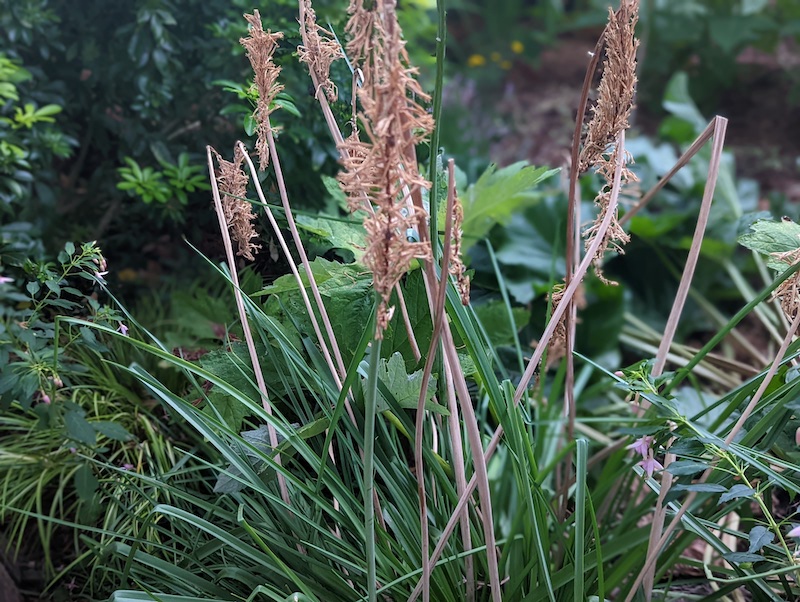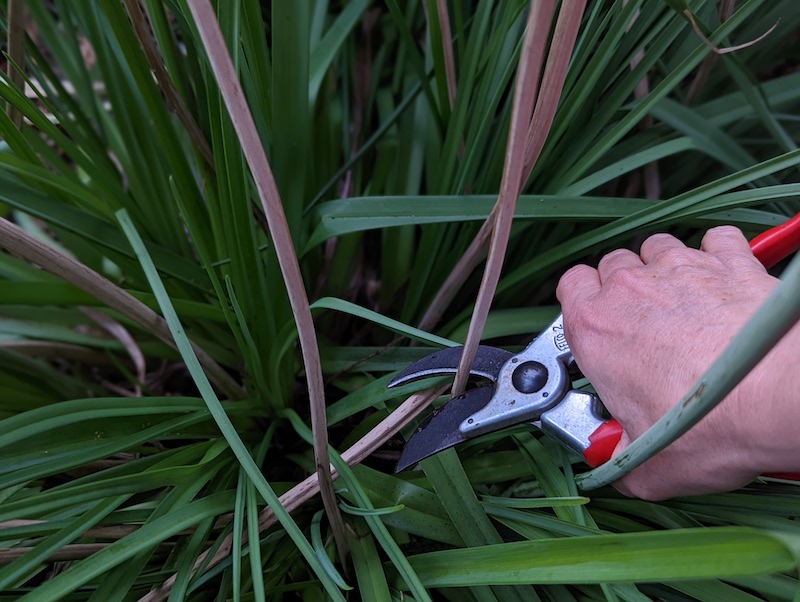Red Hot Poker (Kniphofia spp.) is a cold-hardy perennial that is anything but delicate. Able to overwinter in temperatures down to -30°F, in growing zones 5-9, the grass-like leaves of Red Hot Poker will die back to the ground in colder climates. In warmer regions, Red Hot Poker leaves may even survive and continue to provide food for the plant, aiding in new spring growth and vigorous flower production.

Protecting Red Hot Poker in Winter
To give Red Hot Poker the best chance at surviving the winter, avoid pruning or cutting back its leaves until the spring. Any living leaves can continue to function through the winter, and even dead leaves act as a sort of mulch, creating a buffer against extreme temperatures. In late fall, tie Red Hot Poker leaves into a bundle to prevent water from rotting the crown. Adding 2-3 inches of mulch around your perennials before winter hits can also provide extra insulation for their roots, increasing their chances of surviving the winter.

Cutting Back Red Hot Poker For Winter
We recommend waiting until the spring before pruning back last year’s leaves. In colder regions, Red Hot Poker will go entirely dormant in the winter, leaving little more than a bundle of slender brown leaves in your garden. In warmer regions, Red Hot Poker may still be green in the winter, able to continue making food for itself and storing up energy for its summer blooms. Tying the leaves up in all regions will protect the crown from the cold and moisture. In the early spring, when new growth begins to appear and the chance of a deep freeze has passed, the old growth can be cut back.

Red Hot Poker Winter Care in Pots
When planted in pots or containers, perennials lose a great deal of their ability to survive the winter. Above ground, perennial roots are more exposed to temperature extremes and lose the insulation provided by a garden bed. For this reason, if you live in a colder climate with harsh winters, it is best to bring pots containing perennials into a protected area such as a heated garage or basement in the winter. If your storage area is warm enough for the plant to continue living, they will need light and water regularly. If the potted plants are allowed to go dormant, they will need minimal care through the winter.
Watering Red Hot Poker in Winter
When planted in a garden, Red Hot Poker will not need water in the winter unless your region experiences very mild, warm winters with plenty of sunlight. Even then, Red Hot Poker can be quite drought-tolerant through the winter, needing water only when the ground has dried almost entirely.
If you are keeping Red Hot Poker in pots through the winter, how frequently it needs water will depend on how much light it is getting, the temperature, and how quickly the soil dries. If allowed to go dormant and if the leaves die back, Red Hot Poker will not need to be watered through the winter. If you are storing pots in a warm place with light, you may need to water more frequently, though the soil can still dry out a bit in between waterings.
Growing Red Hot Poker Indoors
To enjoy your potted Red Hot Poker for longer, you may be able to bring it indoors over the winter. Because Red Hot Poker needs full sun to thrive, it will do best in a south-facing window where it can get at least 6 hours of direct sun a day. It is unlikely to bloom in these growing conditions, however, and will need to be watered regularly, allowing the top few inches of soil to dry out before watering deeply. Keeping perennials as indoor plants can be a bit tricky, but if you can keep it going until the last frost, the pot can be brought back outdoors where it can get plenty of sun again.
Steps To Care For Red Hot Poker in Winter
Red Hot Poker is very cold tolerant when planted in the ground as long as you take the necessary steps to protect it from the cold. Depending on your climate, this may be as easy as allowing the plant to go dormant and resist the urge to clean up the dead leaves. In warmer climates, Red Hot Poker is a very low-maintenance winter plant.
Step 1 - Do not cut back until the spring.
Step 2 - Mulch around the plant.
Step 3 - When dormant, do not water.
Step 4 - In warmer climates, water infrequently.
 |
Author Lynn Gusman - Published 9-21-2022 |
